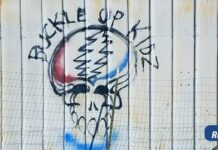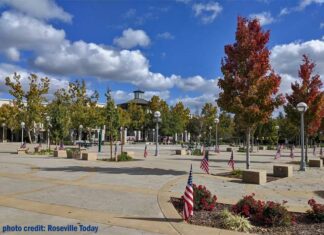Stem cells to treat disease and injury
Sacramento,, Calif. – The state stem cell agency, California Institute for Regenerative Medicine (CIRM), awarded a pair of grants totaling more than $7 million to UC Davis School of Medicine researchers who are working to develop stem cell therapies for spina bifida and chronic diabetic wounds.
The funding is part of what the agency considers “the most promising” research leading up to human clinical trials using stem cells to treat disease and injury.
Diana Farmer, professor and chair of surgery at UC Davis Medical Center, is developing a placental stem cell therapy for spina bifida, the common and devastating birth defect that causes lifelong paralysis as well as bladder and bowel incontinence. She and her team are working on a unique treatment that can be applied in utero – before a baby is born — in order to reverse spinal cord damage.
Roslyn Rivkah Isseroff, a UC Davis professor of dermatology, and Jan Nolta, professor of internal medicine and director of the university’s Stem Cell Program, are developing a wound dressing containing stem cells that could be applied to chronic wounds and be a catalyst for rapid healing. This is Isseroff’s second CIRM grant, and it will help move her research closer to having a product approved by the U.S. Food and Drug Administration that specifically targets diabetic foot ulcers, a condition affecting more than 6 million people in the country.
The CIRM board, which met in Berkeley today, has high hopes for these types of research that the agency funded in this latest round of stem cell grants.
“This investment will let us further test the early promise shown by these projects,” said Jonathan Thomas, chair of CIRM’s governing board. “Preclinical work is vital in examining the feasibility, potential effectiveness and safety of a therapy before we try it on people. These projects all showed compelling evidence that they could be tremendously beneficial to patients. We want to help them build on that earlier research and move the projects to the next level.”
The CIRM grants are designed to enable the UC Davis research teams to transition from preclinical research to preclinical development over the next 30 months to be able to meet the FDA’s rigorous safety and efficacy standards for Investigative New Drugs.
As the former surgeon-in-chief at UCSF Benioff Children’s Hospital, Farmer helped pioneer fetal surgery techniques for treating spina bifida before birth. The condition, also known as myelomeningocele, is one of the most common and devastating birth defects worldwide, causing lifelong paralysis as well as bowel and bladder incontinence in newborns.
Farmer has been investigating different stem cell types and the best way to deliver stem cell-based treatments in the womb for the past six years. She and her research colleagues recently discovered a placental therapy using stem cells that cures spina bifida in animal models. That discovery requires additional testing and FDA approval before the therapy can be used in humans. With the CIRM funding, Farmer and her team plan to optimize their stem cell product, validate its effectiveness, determine the optimal dose and confirm its preliminary safety in preparation for human clinical trials.
Isseroff, who also serves as chief of dermatology and director of wound healing services for the VA Northern California Health Care System, has long been frustrated by the challenges of treating the chronic, non-healing wounds of diabetics. In 2010, she and Nolta received a CIRM grant to begin developing a bioengineered product for treating chronic diabetic wounds. Foot ulcers, in particular, affect about 25 percent of all diabetic patients and are responsible for most lower-limb amputations. Isseroff and her research team created a treatment using stem cells derived from bone marrow (mesenchymal stem cells) along with a FDA-approved scaffold to help regenerate dermal tissue and restart the healing process. Their studies found the technique to be highly effective for healing wounds in animal models.
With this latest CIRM grant, Isseroff’s team will refine their therapeutic technique by determining the safest dosage for regenerating tissue and testing their product in skin-wound models that closely resemble those in diabetic humans. Nolta also plans to create a Master Cell Bank of pure and effective human mesenchymal stem cells, and establish standard operating procedures for use in diabetic wound repair. The results of their efforts will enable UC Davis to move closer to FDA approval for human clinical trials in the next two and a half years.
“These amazing research efforts are giant steps forward in turning stem cells into cures,” said Nolta, who also directs the UC Davis Institute for Regenerative Cures in Sacramento. “This preclinical research is the most crucial, and often the toughest, stage before we move scientific discoveries from the laboratory bench to the patient’s bedside. We are now poised as never before to make a big difference in the lives of people with spina bifida and non-healing diabetic wounds.”
For more information, visit UC Davis School of Medicine at https://medschool.ucdavis.edu.
(21+ years strong)
Welcome to the brighter side!
Get in front of local customers! 24/7 (365)





















